If I was to create interpolated splines from a large amount of data (about 400 charts, 500,000 values each), how could I then access the coordinates of those splines from another software quickly and efficiently?
Initially I intended to run a regression on the data and use the resulting formula in my delphi program, but that turned out to be a bigger pain than I thought.
I am currently using Matlab but I can use another software if need be.
Edit: It is probably relevant that this data represents the empirical cumulative distribution of some other data (which I already have in a database).
Here is what one of these charts would look like.
The emphasis is on speed of access. I intend to use this data to run simulations on financial data.